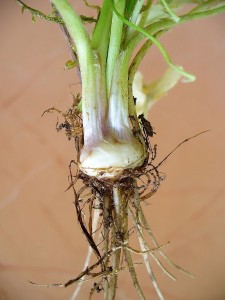The herb Ranunculus bulbosus, which is generally referred to as St. Anthony’s turnip or even bulbous buttercup, is actually a perennially growing plant that belongs to the Buttercup family. This plant bears beautiful blooms having a yellow hue, while its basal leaves are profoundly divided having three lobes and a long petiole. Generally, bulbous butter cup plants grow in clumps. The flowering stems of this plant grow up to a height of anything between 20 cm and 60 cm, grow straight and then branch out and are somewhat hairy. The blooms appear at the top of the stems and they are glossy and yellowish, each flower having anything between five and seven petals. Normally, the flowers measure roughly 1.5 cm to 3 cm across and they bloom during the period between April and July.
Contents
Uses
People take bulbous buttercup for skin diseases, arthritis, gout, nerve pain, flu (influenza), swine flu, and meningitis.
Benefits
This homeopathic remedy is also indicated for treating various types of chest disorders, particularly intercostals rheumatism, wherein the intercostal muscles are afflicted by some type of rheumatism, myalgia, neuralgia and sometimes also the pleura is afflicted. It is also useful for chest problems attributable to coming in contact with cold as well as physical hard work. Ranunculus bulbosus is also beneficial for women who experience pain in the periphery of their shoulder muscles owing to needle work or playing piano or type writing. They usually experience a sharp, stitching and shooting pain.
Ranunculus bulbosus is considered to be the most effective homeopathic remedy for treating shingles, particularly when shingles occur on the body’s trunk. This homeopathic remedy is also recommended for treating severe cases of burns and itchiness that deteriorates when the skin is touched, when there is motion or while eating.
Ranunculus bulbosus – also known as Ran. B. – is also among the best homeopathic remedies for treating the adverse effects of consuming excessive alcohol, delirium tremens (a severe episode of frenzy) and spasmodic hiccoughs.
This homeopathic remedy has been effectively used to treat rheumatic neuralgia or muscular headache (also called myalgic headache), which occurs or deteriorates when there is any change in the weather conditions, such as from warm to damp or cold. In effect, such headaches are similar to neuralgia, but using medications meant for neuralgia do not alleviate the condition. The primary reason for this is that while neuralgia has an effect on the nerves instead of the nerve sheath, when a person is afflicted by rheumatic neuralgia the nerves are affected.
This homeopathic remedy is excellent for people who are suffering from burning sensation and pressure in the eyes, accompanied by intense eye pains, particularly in the right eye. They may also experience pain and burning sensation in the lower right eyelid and there may also be discomfort and burning sensation in the right eye’s external canthus. Sometimes, there may be herpetic vesicles everywhere over the eyes. These herpetic vesicles are bluish-black in color. In fact, Ranunculus bulbosus has successfully cured hemiopia in pregnant women.
Homeopaths have successfully used to Ranunculus bulbosus to cure hay fever accompanied by burning sensation in the eyes, tingling of the soft palate, which deteriorates during the evenings and while pressing the nose root. In such cases, the skin on the nose turns out to be red and is inflamed.
This homeopathic remedy is also ideal for curing stitching pains inside the ears, particularly during the night, and which deteriorate during the evenings. Ranunculus bulbosus has also been effectively used to cure several conditions related to the face, including vesicular flare-ups on the face accompanied by an intense burning sensation; itchiness of the nose, face and chin, epithelioma (timorous growth comprising epithelial cells) of the face as well as twitching or trembling of the lips. In addition, this medication is also effective for treating throat aches accompanied by burning sensation and inflammation as well as the smarting and tingling in the soft palate.
Ranunculus bulbosus is an excellent homeopathic remedy for rheumatic conditions, especially when the condition also involves the chest muscles. In such cases the patient experiences tender spinal nerves and pleura, while the costal muscles are extremely painful all the times. The condition is sensitive like in the case of Bryonia as well as cold and damp weather conditions, as in the case of Dulcamara.
Ranunculus bulbosus is also very effective for treating pleural effusion, particularly when the ribs are very painful – mainly the ribs in the lower portion. When this condition afflicts the chest, usually it is erroneously thought to be pleurisy.
Caution
Bulbous buttercup is LIKELY UNSAFE when taken by mouth or applied directly to the skin. It is very irritating to the lining of the urinary and digestive tracts, causing stomach pain and diarrhea. When applied to the skin, bulbous buttercup can also cause hard-to-heal skin blisters and burns.
Special Precautions & Warnings:
Pregnancy and breast-feeding: It’s LIKELY UNSAFE for anyone, especially pregnant or breast-feeding women, to use bulbous buttercup. When taken by mouth, it can irritate the digestive and urinary tracts, and when applied to the skin, it can cause irritatation.
Interactions
None are recorded.
Other names
Ranunculus bulbosus, Ran.B, Bulbous Buttercup
Reference
Source: Herbs2000, http://www.herbs2000.com/homeopathy/ran_b.htm

